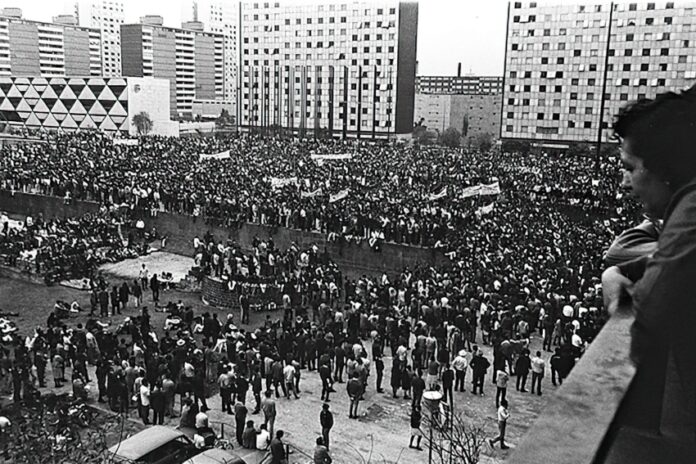The Tlatelolco student massacre of 1968 — one of the most pivotal events in modern Mexican history, one that the renowned National Security Archive organization has called “Mexico’s Tiananmen Square” — all began with a fracas between two rival public vocational high schools that erupted into an out-and-out brawl in a Mexico City marketplace built for the upcoming 1968 Olympics.
The next day, riot police arrived at the two schools, wielding clubs and beating anyone within reach, attacking students and faculty with equal brutality. The following day, students took to the streets in protest of the previous day’s beating, which then, in turn, drew the police out for more violent confrontations.
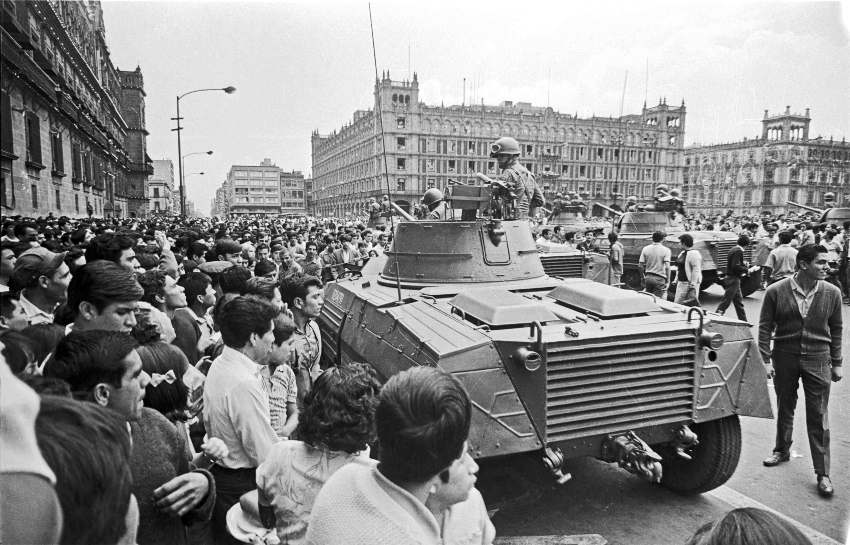
How protests escalated into the 1968 Tlatelolco Massacre
“Those protests provoked more repression, which provoked more protests,” journalists Julia Preston and Samuel Dillon explained in their 2005 book, “Opening Mexico: The Making of a Democracy.”
By the fourth day of protests, tensions escalated. To express solidarity with their fellow teenage protesters, the students of the prestigious high school, San Ildefonso Preparatory — officially known as the National Preparatory School — declared a strike. When Mexican President Gustavo Díaz Ordaz learned that the students at the prestigious government-run school were on strike, he ordered the Mexican army to take the campus.
Soldiers in Jeeps and small tanks moved across the city, aiming to confront the students of San Ildefonso. When they arrived at the campus, they found the entrance locked, so soldiers blew the school’s ornate 18th-century wooden door, hand-carved by Indigenous craftsmen, to bits.
The soldiers rampaged through the school, beating anyone they could find. They then turned on other high schools, and even attacked unsuspecting pedestrians they encountered on surrounding streets.
“By the end of the day, 400 people had been hospitalized and 1,000 arrested,” Preston and Dillon noted.
“Through the military occupation of the San Ildefonso School, the government elevated the situation from a local, primarily police matter to an issue of national security,” wrote Mexican historian Enrique Krauze, author of the seminal book “Mexico: Biography of Power.”
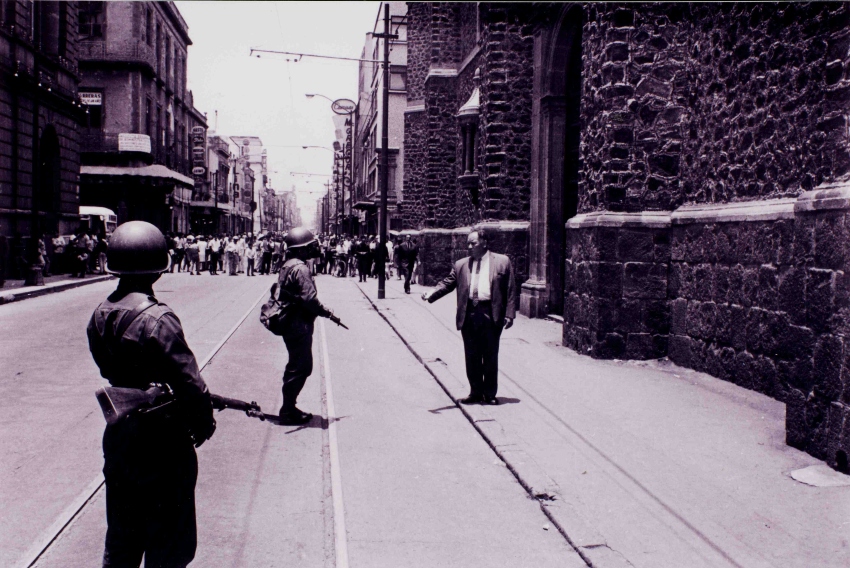
A history of government repression
For most Mexicans, government repression was nothing new. In 1959, railroad workers who went on strike, asking for better working conditions and a modest pay increase, were viciously put down, a pattern well-established with striking miners, doctors, nurses and even teachers. Strikers were routinely either beaten into submission or cajoled into joining a newly created government-run union. But this episode — the government violently attacking a high school — stunned most Mexicans.
In response, on July 31, Javier Barros Sierra, the politically moderate rector of the National Autonomous University of Mexico (UNAM) — which was in charge of San Ildefonso Preparatory and is the largest and most prestigious university in Latin America — led a dignified, peaceful march of 50,000 faculty and students through Mexico City’s leafy suburbs.
That Barros had the temerity to lead such a protest earned him the enmity of Díaz Ordaz; later that summer, it cost him his job. That march, however, moved the center of protests against the government from Mexico’s high schools to its universities.
Taking inspiration from the U.S. civil rights movement and the earlier 1968 student protest movements in Paris, West Germany, Czechoslovakia, Poland and Japan, the Mexican university student activists had happened upon an issue that already deeply resonated with the general Mexican public: government brutality.
Students stand up in dissent
Raúl Álvarez Garín, a 27-year-old physics student from Mexico’s National Polytechnic Institute, emerged as one of the student leaders. Álvarez came from a family steeped in a tradition of protest and of standing up for its beliefs. His grandfather was an aide to Mexican Revolutionary General Álvaro Obregón. His parents were communists. His wife was the daughter of one of the leaders of the aforementioned railroad workers’ strike of 1959.
Álvarez helped draw up a modest list of demands: The government should release the recently jailed students, as well as the railroad union leaders still imprisoned since 1959. They should also compensate the families of injured protesters, disband the riot police and repeal vague laws used to jail anyone who dissented with the government.
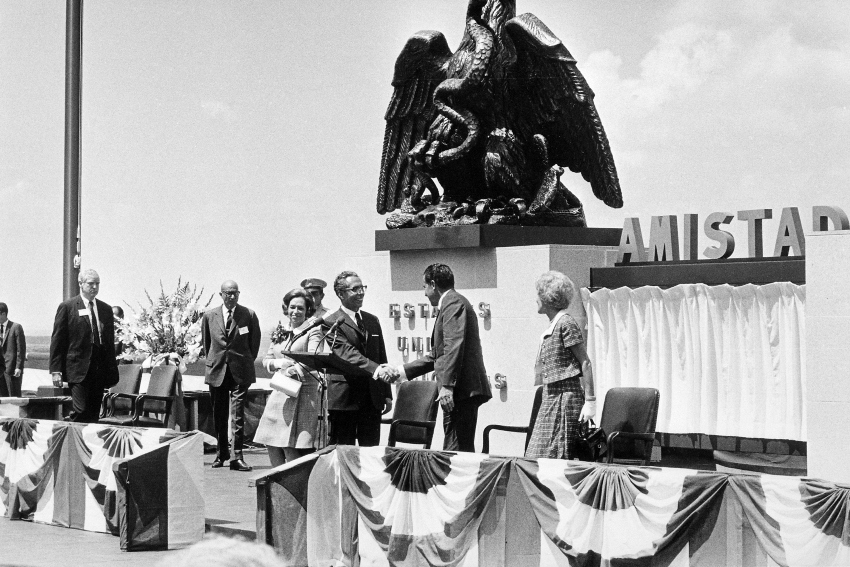
Álvarez and his fellow activists weren’t advocating regime change or overthrowing the government. They were advocating that the political process in Mexico become more tolerant, open and democratic. But, for Díaz Ordaz, this was beyond the pale. The government never responded to the demands.
In the face of government silence, the student activists decided to hold a march from the southern suburbs to the Zócalo. They set the date for August 13, hoping to attract a few followers. On that day, by the time they reached the Zócalo, there were 200,000 people in tow. While many were students and families of students, there were also nurses, teachers, and every kind of worker in the city in the crowd. Speeches were delivered, and the event was entirely peaceful. As Preston and Dillon pointed out, “The unexpected size of the crowd proved that the students were voicing frustrations felt by Mexicans of all ages in a modernizing Mexico.”
A warning to protesters
The students then planned another march to the Zócalo for August 27, and this time, 400,000 people showed up. On this occasion, though, some students congregated under the balcony of the National Palace, the building from which Mexican presidents traditionally preside over annual Independence Day celebrations, standing on a balcony. Those students then started chanting, “Sal al balcón, chango hocicón” (“Come out to the balcony, you big-snouted monkey”) — referring to Díaz Ordaz’s pronounced buckteeth and frequent comparisons to a monkey.
As nighttime fell, most protesters left, but at the approach of midnight, a few thousand stragglers continued to mill around. At that point, a dozen armored personnel carriers rolled into the Zócalo; the army mercilessly beat any remaining protesters.
Then on September 1, Díaz Ordaz delivered his annual State of the Union address, essentially offering a warning.
“We can’t allow our legal order to continue to be ruptured so inexcusably,” the president declared in his speech. “We wouldn’t like to find ourselves in a situation where we would have to take measures we don’t want to. But we’ll take them if we must. We’ll go as far as we have to.”
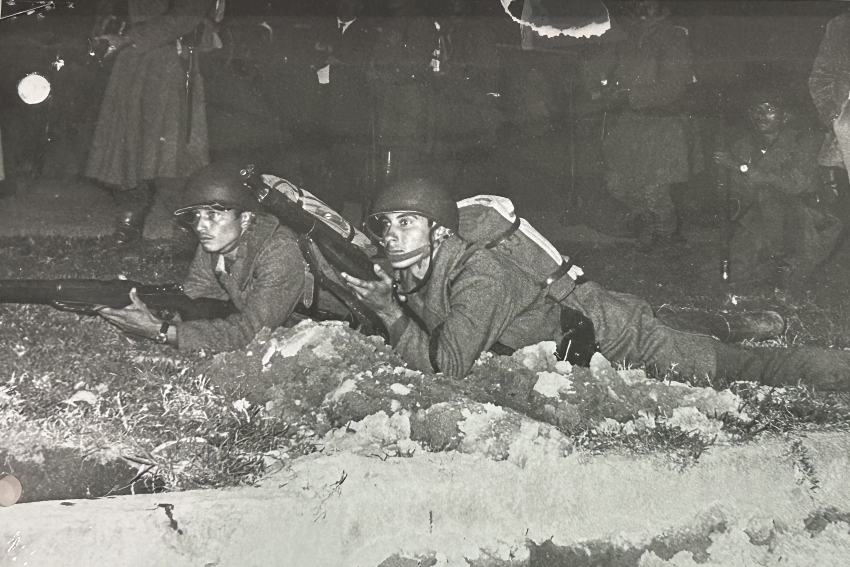
Unfortunately, the students did not recognize the warning.
Politician and ex-education minister of Mexico City Salvador Martínez della Roca, one of the student leaders from UNAM at the time, told U.S. journalist Mark Kurlansky, “It was a threat, but we didn’t really listen.”
By September 24, “Mexico City was living under a barely camouflaged state of siege,” Krauze explains.
Mexican military mobilizes against campuses
On that day, the army seized the National Polytechnic Institute (IPN), known colloquially as the Politécnico; government forces had already occupied the UNAM campus. IPN students fought the army for hours, but there was only so much that unarmed civilians could do against tanks.
Although the army withdrew from both campuses on September 30, the message had been sent. Unfortunately, students failed to recognize that, for Díaz Ordaz’s government, a hard-and-fast deadline was quickly approaching: the 1968 Olympic Games, scheduled to begin in Mexico City on Oct. 12.
The Olympics were seen by many in the nation as Mexico’s moment to shine: The world no longer saw it as a chaotic, strife-ridden backwater nation but as the “Mexico Miracle” — with a powerful economy and a newly minted middle class. From the 1950s through the 1960s, Mexico’s economy had grown at 6% per annum (8% in 1968). In 1968, Mexico had the strongest economy in all of Latin America, with an inflation rate lower than the United States.
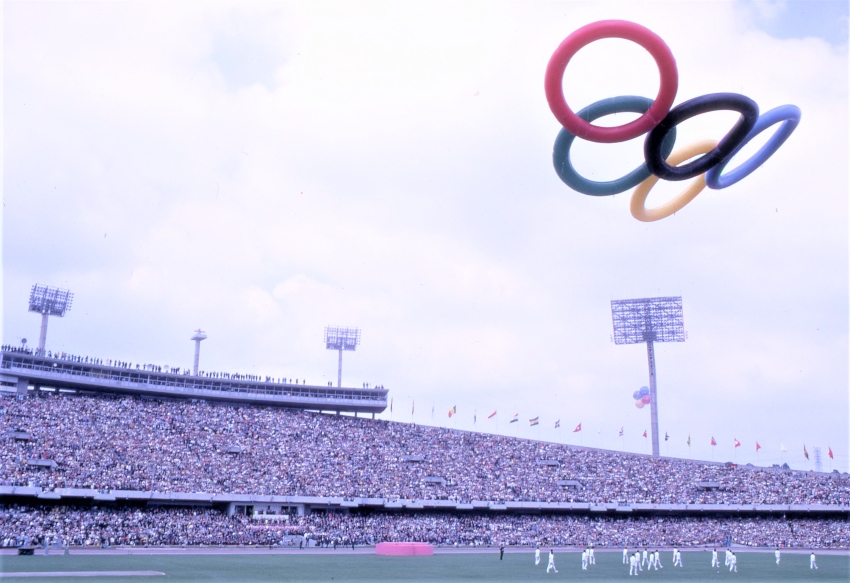
Díaz Ordaz was not about to let a bunch of long-haired students, whom he viewed as spoiled, ruin the opening of the Olympic Games and Mexico’s moment of glory.
President Díaz Ordaz sees conspiracies everywhere
Much like former U.S. president Richard Nixon, Díaz Ordaz was a tremendously insecure man, about his appearance and when interacting with others. “Ever since he was a little boy, the sense of being ugly had tortured him,” Krauze explained. “His mother would freely say to anyone, ‘But what an ugly son I have!’ It would take its toll on his life.”
And much like Nixon, Díaz Ordaz saw conspiracies everywhere. If students were protesting, it must be at the behest of French communists or Cuban agitators. In reality, this seems unlikely; even the CIA station chief in Mexico City, Winston Scott, doubted it.
“Although the [Mexican] government claims to have solid evidence that the Communist Party engineered the fracas of 26 July, and reportedly had indications of Soviet Embassy complicity, it is unlikely that the Soviets would so undermine their carefully nurtured good relations with the Mexicans,” Scott told CIA headquarters at the time.
It never occurred to Díaz Ordaz that it was, in fact, his policies — or his overreaction to a minor skirmish — that spurred the student protests.
After a few more protests, at which some buses were set on fire, the student leaders scheduled a rally to be held on October 2 at the Plaza de las Tres Culturas. This plaza sits in the Tlatelolco neighborhood on the north side of Mexico City. Perhaps more than any other site, it best represents Mexican history: Aztec ruins there are flanked by a Franciscan church.
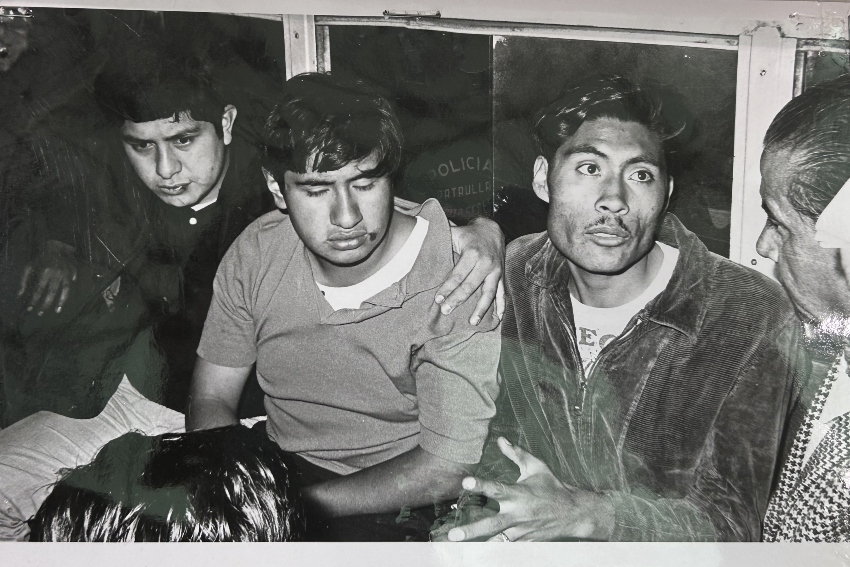
In the 1960s, the ruling PRI (Institutional Revolutionary Party) government built a housing project there, one building of which was Edificio Chihuahua. The third floor of the Edificio Chihuahua had an open-air hallway with a three-foot wall overlooking the plaza. It was from this third-floor balcony that the speakers decided to address the crowd on October 2.
The day of the Tlatelolco Massacre
By 8:30 a.m. that morning, the army had taken up positions in each corner of the plaza — not necessarily unusual, as the army often posted soldiers at protest rallies. But something about this day seemed off: Witnesses later mentioned seeing men with short haircuts in civilian clothes, all wearing a white glove on one hand.
Myrthokleia Gonzáles Gallardo, a 22-year-old Politécnico student, had been chosen to introduce the speakers that day, even though her parents warned her not to go, fearing something might happen with the increased military presence.
Myrthokleia described her entry into the Plaza:
“As I approached the Tlatelolco with the four speakers, I was introduced, and we were warned to be careful, as the army had been seen nearby. But I wasn’t afraid, though we decided to make it a short meeting. There were workers, students, and families coming into the plaza, filling it up. We didn’t see any [soldiers] in the plaza.
“We took our place on the third floor and started our speeches. Suddenly, off to the left, over the church, were helicopters with a green light. Suddenly, everyone down in the plaza started falling. And then men with white gloves and weapons appeared, maybe from the elevator. They ordered us down to the ground floor, where they began beating us.”
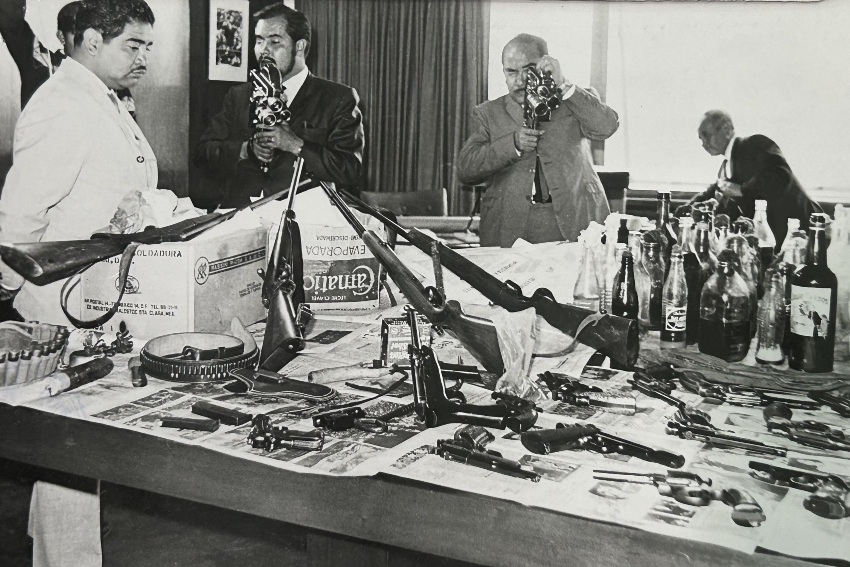
Gunfire erupts and continues for hours
Raúl Álvarez Garín was also whisked down to the ground floor and made to stand facing a wall as government forces beat him relentlessly. Álvarez remembered the sound of automatic gunfire continuing for a full two hours. Other witnesses remember sporadic gunfire until 11 p.m.
The next morning, journalist Elena Poniatowska arrived at Tlatelolco at dawn. There were tanks and soldiers everywhere, yet no one tried to impede her strolling around the plaza. She had heard from a friend that bodies covered the plaza, but by morning, they all had been taken away.
In the newspaper Excelsior, Poniatowska learned that Italian journalist Oriana Fallaci was in Mexico to cover the Olympics and had been wounded while attending the rally. Poniatowska tracked down Fallaci in a hospital and interviewed her.
“What savagery!” Fallaci told her. “Police dragging students away by the hair. I saw many people get hit — until I was hit too. I lay in a pool of my own blood for 45 minutes.”
Shocked by what she heard, Poniatowska wrote an article detailing the events. Her editor immediately rejected it.
“There’s an order,” the editor announced, according to Preston and Dillon. “We’re going to concentrate on the Olympic Games. We’re not printing anything more about Tlatelolco.”
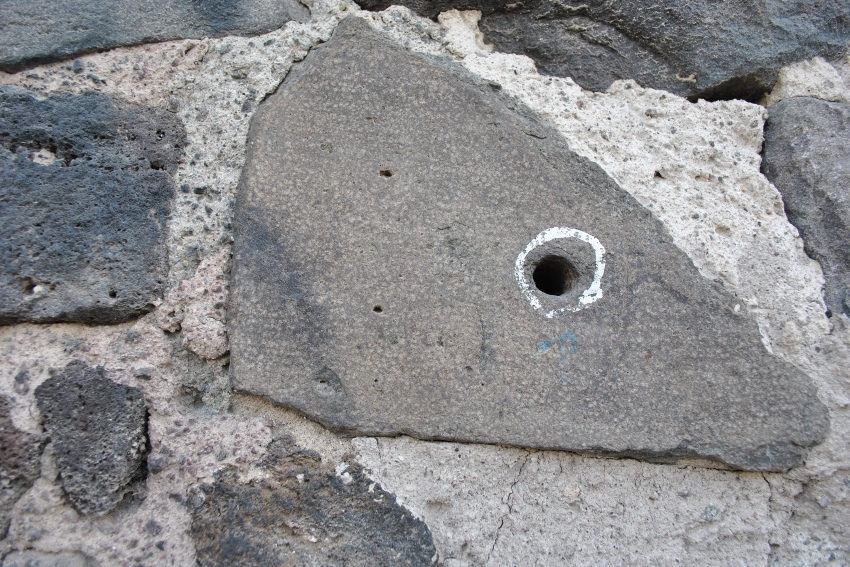
The legacy of the Tlatelolco Massacre
The Tlatelolco student massacre was a tragic and immensely consequential event in Mexican history. The Olympic Games may have gone off without a hitch, but at what cost? Over 400 people were murdered in cold blood by government troops. Hundreds more simply disappeared, never heard from again. Hundreds more were imprisoned for years. Hundreds, if not thousands, went into hiding, fearing retaliation for simply expressing their ideas about the nature of their society.
Before 1968, most Mexicans felt proud of their nation’s economic achievements. During the Mexican Revolution, one leader after another had been brutally assassinated. In the wake of the Revolution, the PRI provided stability and economic growth, and Mexico had become a modern nation. In 1959, American academics conducted a poll and found that while most Mexicans were tired of their country’s endemic corruption, they were generally proud of their political system and its achievements and felt their presidents were, for the most part, benign. After 1968, however, most middle-class Mexicans felt disillusioned, resentful and utterly distrustful of their government.
Perhaps the students’ National Strike Council (CNH) final statement, issued in December 1968 upon its dissolution, summed it up best:
“Democracy in Mexico is just a concept, another formalism,” it announced. “Politics is carried out behind the backs of the popular majorities and of their aspirations, interests and demands.”
While the student movement of 1968 was neutralized, the Tlatelolco massacre has had a long-lasting impact on Mexican politics and history: More than 50 years later, October 2 is commemorated every year across Mexico with civilian demonstrations. Films and documentaries and countless books have been written about it — in Mexico and around the world.
Groundwork laid in 1968 also spawned a generation of the nation’s activists and political leaders, who were involved in Mexico’s electoral reform in the 1980s, which ultimately led to the end of the PRI’s uninterrupted rule over Mexico for 70 years in 2000, with Vicente Fox’s election as president.
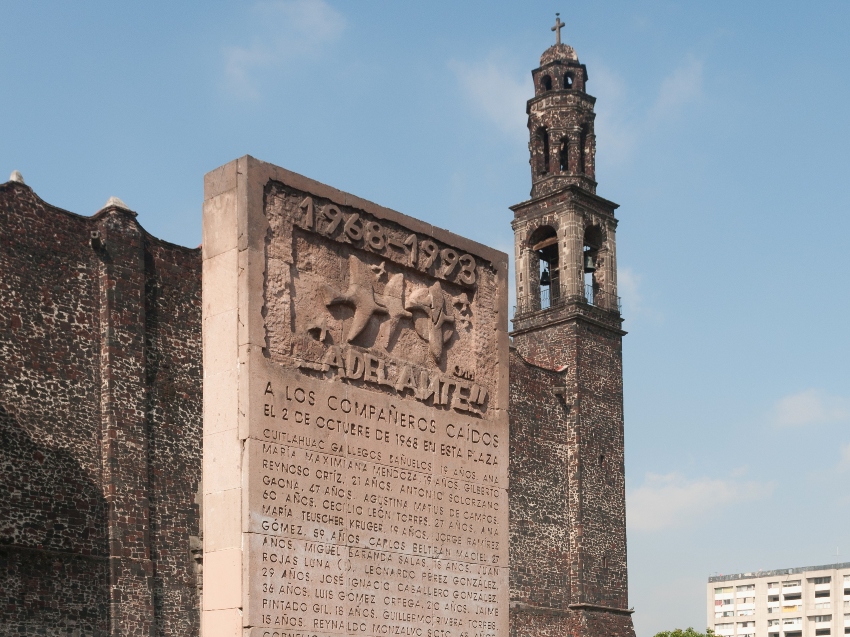
Kurlansky, in his book “1968: The Year that Rocked the World,” commented: “But very much in the same way that the invasion of Czechoslovakia was the (beginning of the) end of the Soviet Union, Tlatelolco was the unseen beginning of the end of the end of the PRI.”
Robert McLaughlin, Ph.D. is a historian specializing in Cold War Latin American history.
